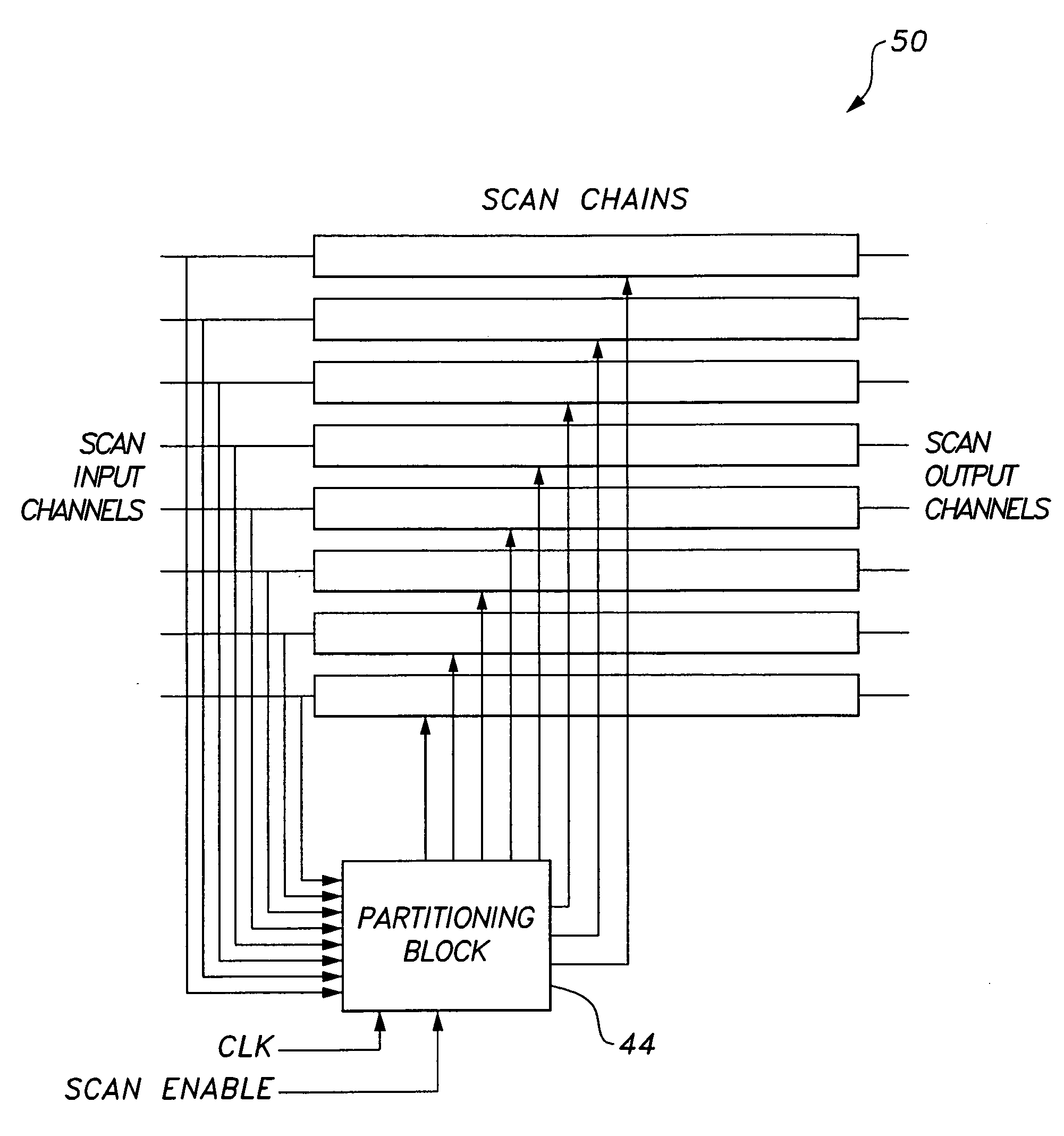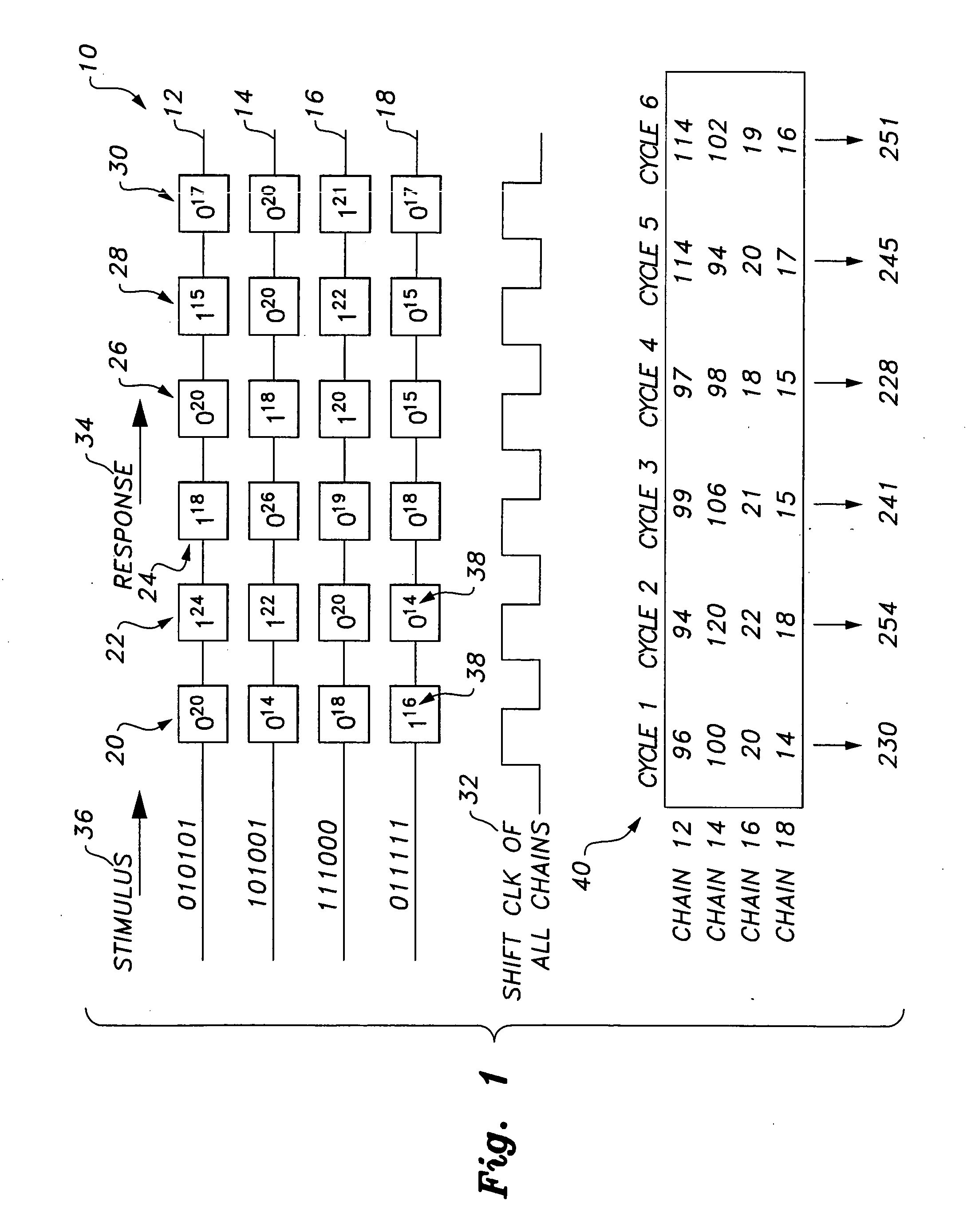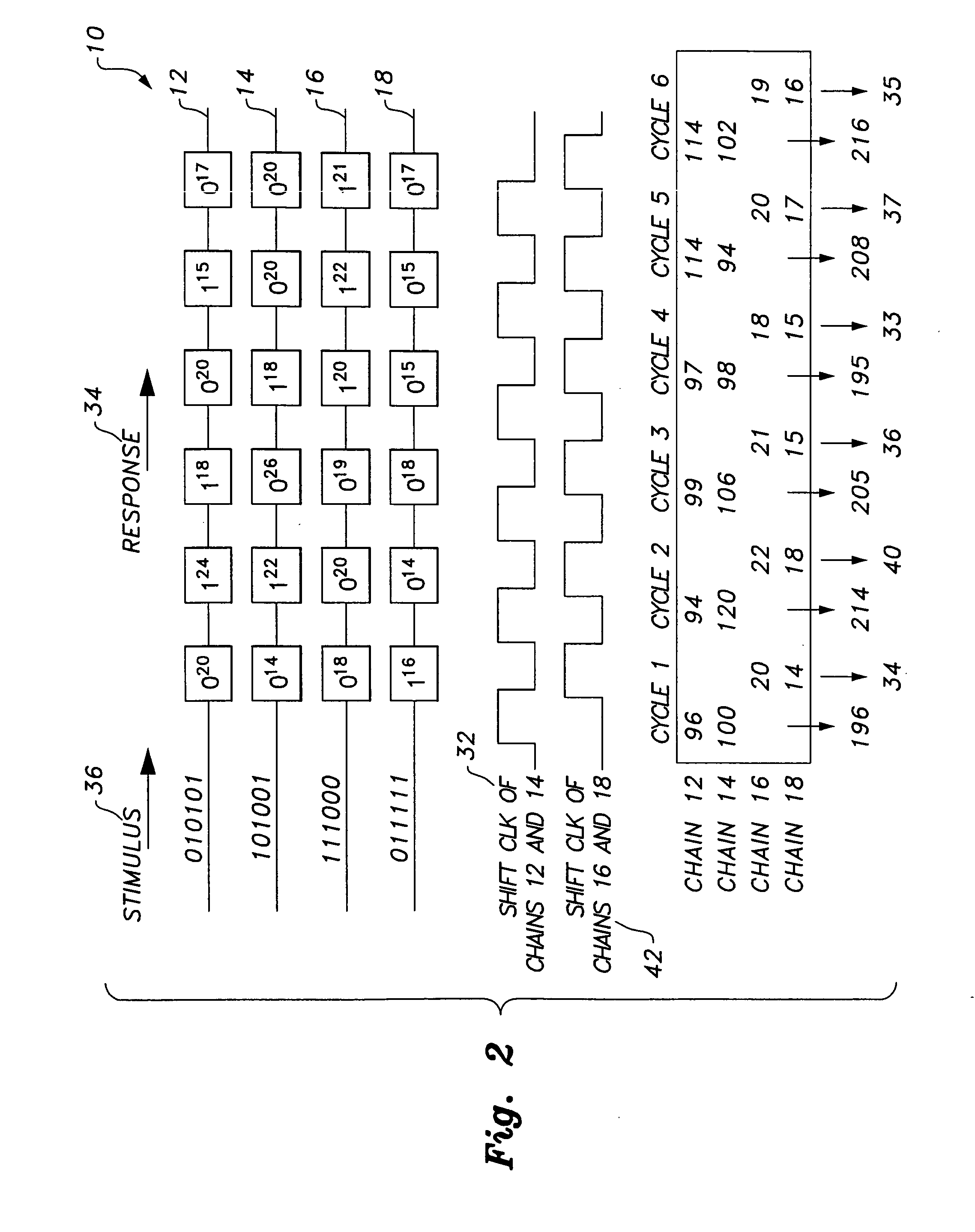Circuit and method providing dynamic scan chain partitioning
- Summary
- Abstract
- Description
- Claims
- Application Information
AI Technical Summary
Benefits of technology
Problems solved by technology
Method used
Image
Examples
Embodiment Construction
[0031]In FIG. 1, an exemplary scan test architecture, generally indicated by the number 10, for an integrated circuit chip is shown. The scan test architecture 10 shows four scan chains 12, 14, 16, 18, each with six scan cells, 20, 22, 24, 26, 28, 30. No scan chain partitioning is pursued in this example. All scan chains 12, 14, 16, 18 receive an identical shift clock 32. A captured response 34 and a subsequent stimulus 36 to be inserted are shown. A weight 38 is assigned to each of the cells 20, 22, 24, 26, 28 and is displayed in the upper right corner of each of the cell.
[0032]On the bottom of FIG. 1, a cycle-by-cycle transition count chart, generally indicated by the number 40, for each of the scan chains 12, 14, 16, 18 is also shown. For instance, in the topmost scan chain, denoted as chain 12, all the scan cells 20, 22, 24, 26, 28, 30 except for the third one, scan cell 24, toggle in the first shift cycle, resulting in 20+24+20+15+17=96 transitions in this cycle. For every shif...
PUM
 Login to View More
Login to View More Abstract
Description
Claims
Application Information
 Login to View More
Login to View More - R&D
- Intellectual Property
- Life Sciences
- Materials
- Tech Scout
- Unparalleled Data Quality
- Higher Quality Content
- 60% Fewer Hallucinations
Browse by: Latest US Patents, China's latest patents, Technical Efficacy Thesaurus, Application Domain, Technology Topic, Popular Technical Reports.
© 2025 PatSnap. All rights reserved.Legal|Privacy policy|Modern Slavery Act Transparency Statement|Sitemap|About US| Contact US: help@patsnap.com



